Sylvan linings: why interior designers are getting lost in the woods
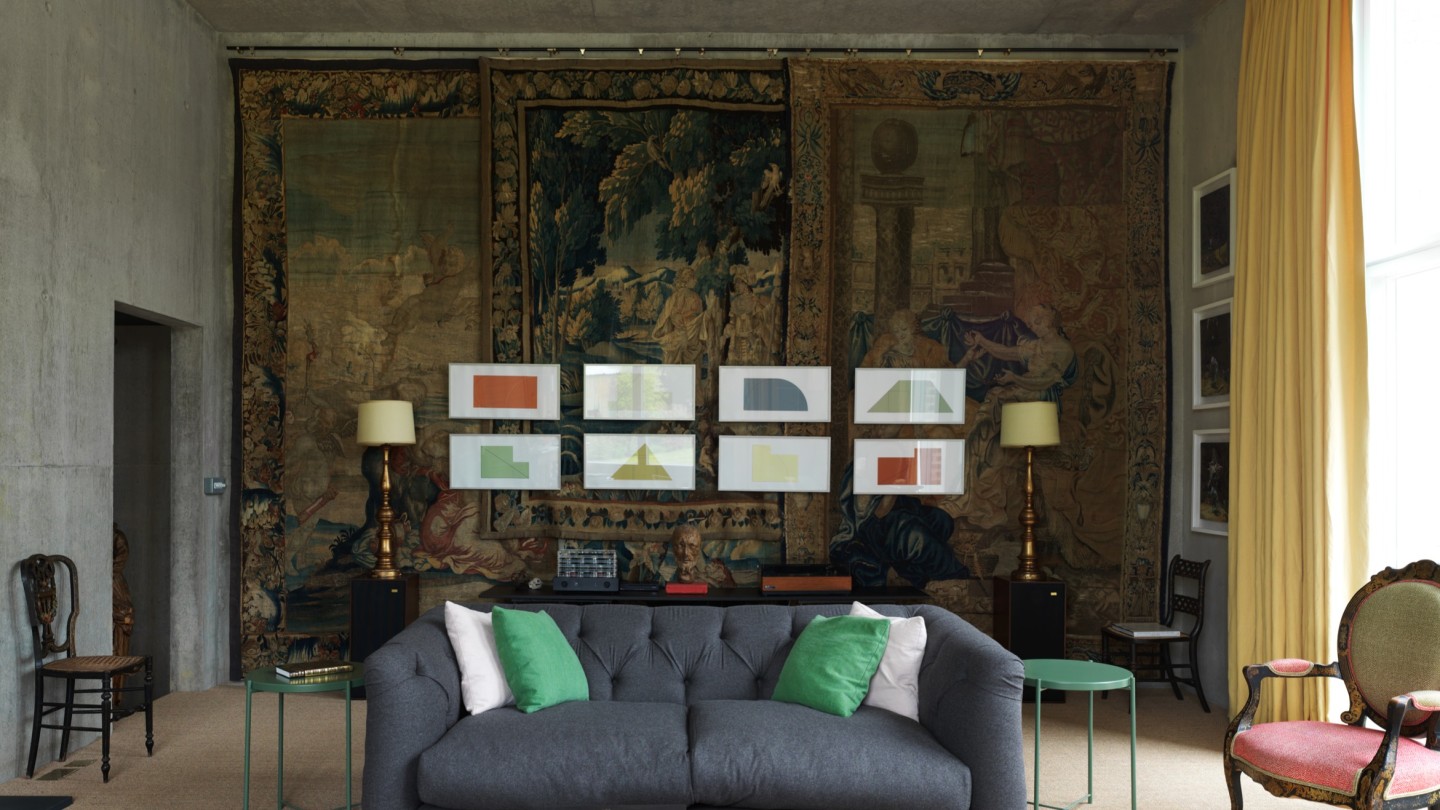
Roula Khalaf, Editor of the FT, selects her favourite stories in this weekly newsletter.
When William Morris first sat down at the tapestry loom in his bedroom at Oxfordshire’s Kelmscott Manor in 1877 to engage in what he called “the noblest of the weaving arts”, he found inspiration in the large-leaf tapestries woven in France and Flanders more than half a century earlier. The easy beauty of verdure tapestry continues to echo through the ages. Also known as garden tapestry, these woven pictures depicting wooded glades, abundant foliage and botanical landscapes have graced the walls of illustrious interiors since the Middle Ages. The word “verdure” can be traced to the Latin virere, meaning simply “to be green”. Now these uplifting forest scenes of thick vegetation, woven in rich shades of green and blue and flecked with yellow, are being infused with a new cachet.
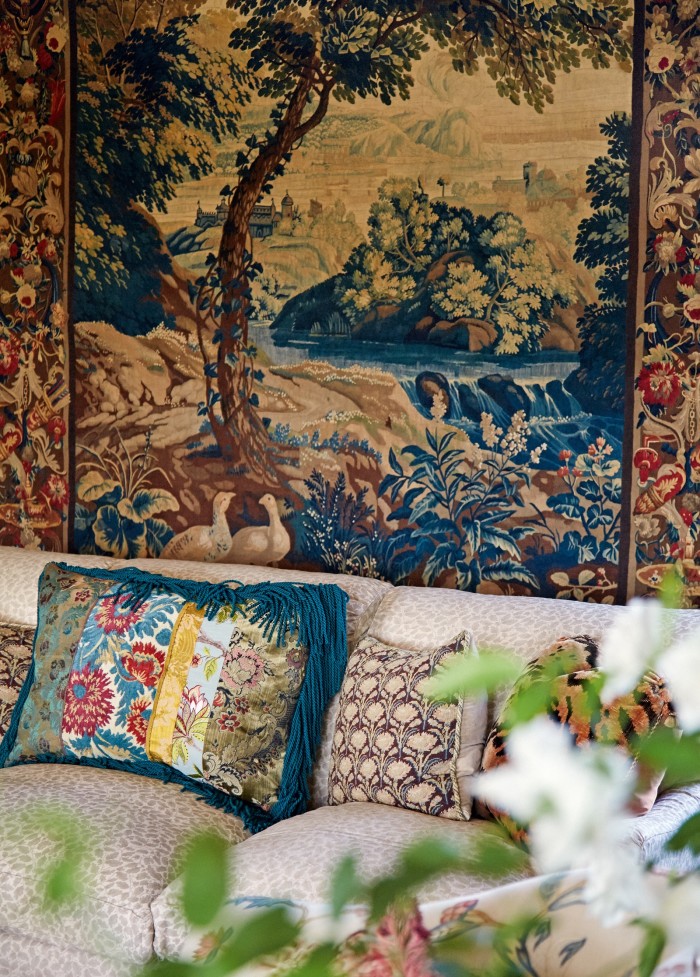
“People are starting to realise that a verdure tapestry is an amazing and adaptable focal point for a room,” says Helena Gumley-Mason, who heads up the carpet and tapestry division at Bonhams in London. As well as invoking a sense of historical grandeur, these works of art have remained, until recently, relatively affordable – though in recent years at Bonhams, verdures have consistently exceeded their valuations. “There was a time when a good verdure would sell for a few hundred pounds,” Gumley-Mason explains. “But now prices are building into the thousands.” In November 2019, a narrative verdure sold at Bonhams in Los Angeles for just under $9,000.
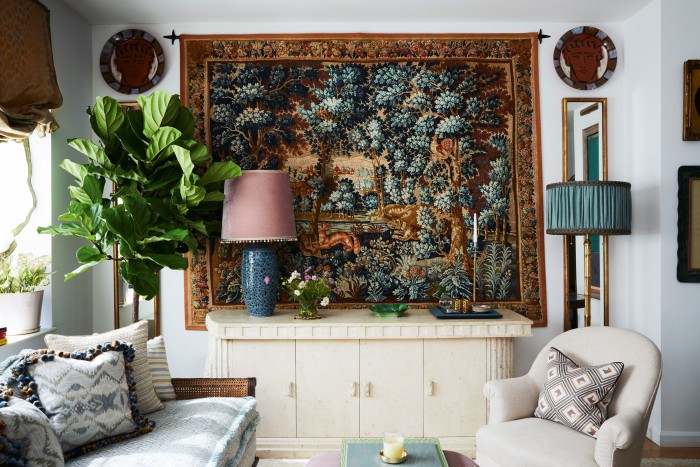
Originally created at a time when homes were typically dark and draughty, a verdure brings the brightness of the natural world into a domestic interior. “They’re this super-luscious style of tapestry that started out very simply but became increasingly ornate,” says Gumley-Mason. Inventories of 16th- and 17th-century homes show that tapestries were status symbols – Henry VIII’s many palaces contained around 2,000. By the time the epicentre of weaving shifted from Antwerp – once the weaving capital of the world – to France, flourishing in sites including Aubusson, verdure began to lose its lustre. “They became much more domesticated,” Gumley-Mason explains. “They started appearing on cushions, and got a reputation for being fuddy-duddy. The kind of thing your granny might have.”
A solid barometer of any swing back towards fashionability is when a prominent interior designer considers a once-unpopular piece to decorate their home. Martin Brudnizki used a large wall-hung tapestry when creating his Manhattan apartment in 2019. The verdant scene was juxtaposed with leafy plants, cream chairs and a Georgian cane sofa.
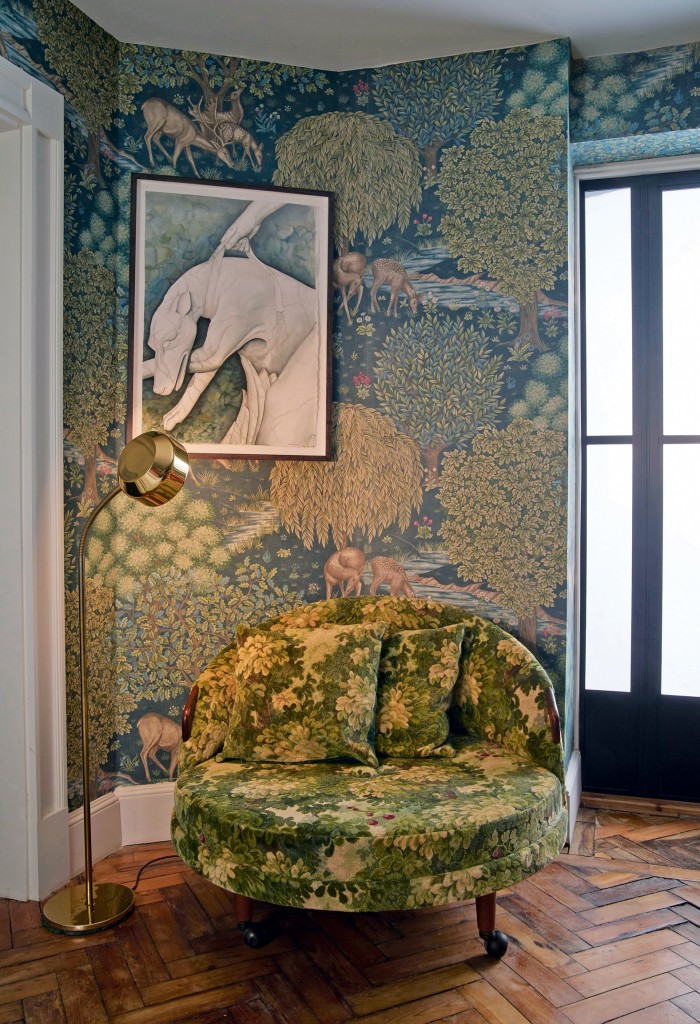
For the London interior designer Rachel Chudley, verdure tapestry answers a broader call among her increasingly emboldened clientele for a home that tells a story. “It’s an instant way to create a magical space,” says Chudley, who recently acquired a 19th-century verdure that will form the backdrop to a suite of brutalist, black-leather furniture in a client’s sitting room. Verdure features, too, on a bedroom slipper chair upholstered in pieced-together tapestry fragments for a 1950s Manhattan apartment. “That contrast of historical and modern is so satisfying,” she says. “You wouldn’t immediately think of an old-fashioned thing like a tapestry going into a space like that, but these pieces of woven fabric give a sense of history that you just can’t fake. They’re full of all of these wonderful little hidden symbols.”
Tapestries are often more affordable than a painting and some collectors actively seek pieces that aren’t in perfect condition, regarding their age-worn look as a draw rather than a deal-breaker. “I often think the more messed-up they are, the better,” says American antiques dealer and interior decorator Remy Renzullo, who caters to clients on both sides of the Atlantic. “I’m always drawn to objects whose history is visually obvious.” As Renzullo suggests, a verdure brings a textural richness that can’t easily be replicated. In a smaller space, he says, they’re bold and graphic, and in grander homes, when hung with canvases, they’re truly transportive but in a low-key way. “A verdure can make a room feel instantly more lived-in,” says Renzullo. “But unlike figurative tapestries, they don’t feel too grand. There’s a certain casualness to them – just like plants, they bring a sense of ease and familiarity.”
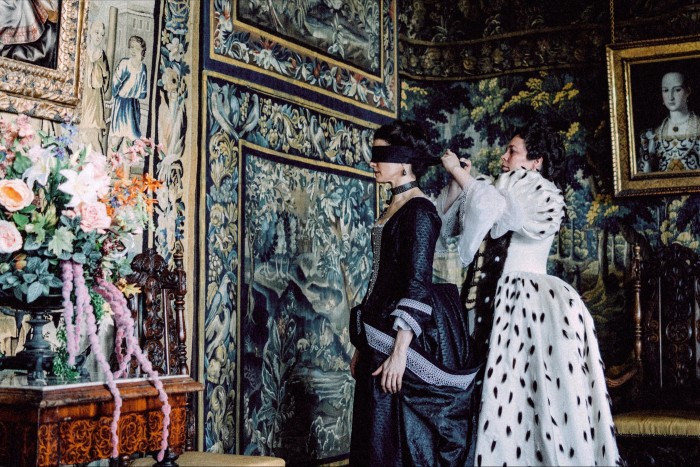
Renzullo cites the Jacobean interiors of Haddon Hall in Derbyshire and the King James Drawing Room at Hatfield House as spaces where you can be truly starstruck by the power of verdure. The latter formed the romantic backdrop to director Yorgos Lanthimos’s 2019 film The Favourite. “Great tapestries have a huge impact in a room,” he says. “They can take your breath away.” The designer sees a parallel between verdure’s renaissance and the rising appetite among collectors for classical antiquities. “There’s something that feels modern about them,” he observes. “To me, the roughness of a verdure tapestry echoes the feel of a 20th-century painting.”
Whether hung or casually laid over a table or chair, verdure has a decadent yet timeless aesthetic. It sets the scene beautifully in the 17th-century Parisian townhouse shared by Alfred van Lelyveld and Olivier Trebosc, designed by French architect Jacques Garcia. The dealers in museum-quality European sculpture installed a verdure tapestry in the large entrance hall, which serves as their private showroom. “It’s a surprisingly neutral backdrop,” says van Lelyveld. “It works just as well against a modern work by Bourdelle as it does a Renaissance bronze.”
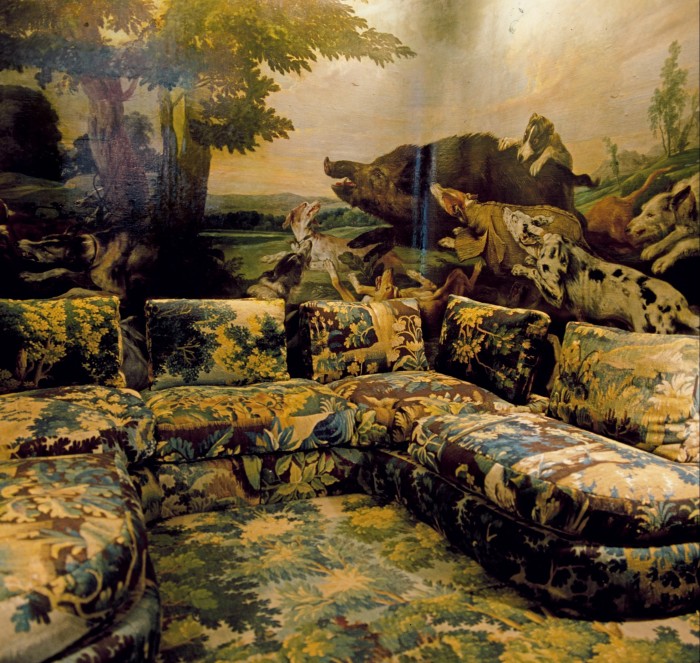
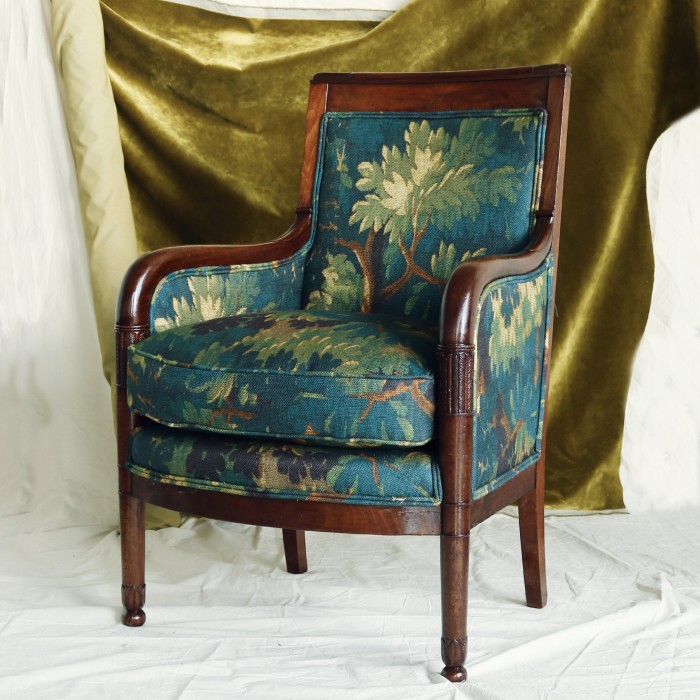
Unearthed at a French auction house, the piece, which had come from an old château, was damaged beyond repair. Rather than restore it, they cut and adapted it to fit the space, hanging it around doors and painting the walls beneath dark blue to disguise any damage. “It creates this very appealing, very inviting ambience,” he says. The trick is mirrored by another legendary French decorator, François Catroux, in a project for the Rothschilds. Catroux took the scissors to a 400-year-old verdure, using it to envelop the floor of a television room and a modern 1970s sofa. The effect is so all-encompassing that it borders on disorientating.
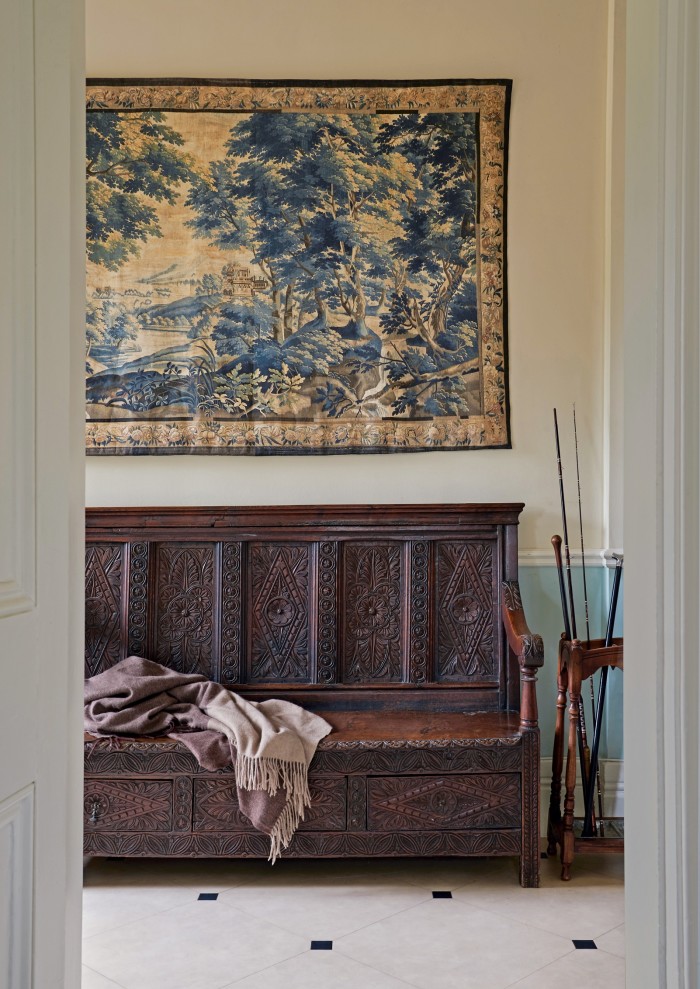
The sheer scale of verdure-tapestry production means this kind of cut-and-paste decorating can be viewed as creative recycling. “Verdures were made in their tens of thousands,” says Patrick Keeling of Zardi & Zardi, which produces digital reproductions of historical tapestries. “Ubiquitous as wall coverings, they were created in a vast range of designs over a really long period of time.” The advent of digital technology, which has enabled their complex colourways to be easily replicated, has made them even more accessible. Keeling works with stately homes to provide stand-ins when original tapestries are sent for restoration, lending set pieces for period dramas (most recently The Great) and delving into an archive of classic verdure designs that also covers fabrics and wallpapers. He likens the grids of thread in a tapestry to the pixels on our digital screens – and certainly verdure’s sylvan appeal is amplified when lit up on our phones.
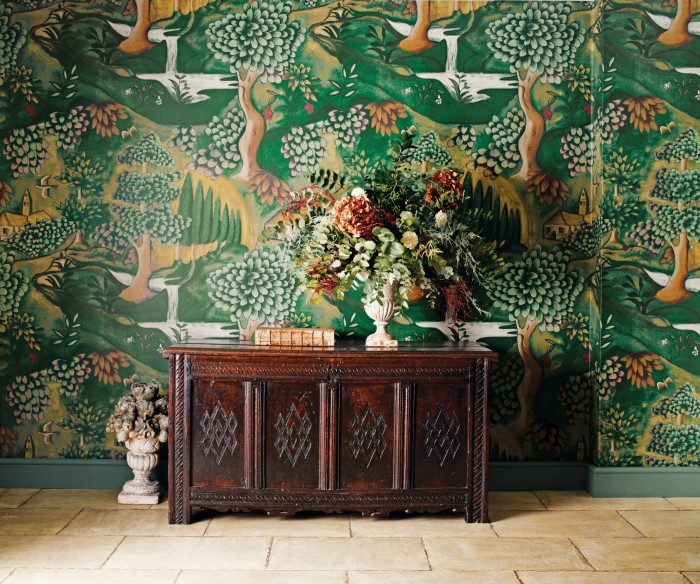
The final death knell for tapestry came with the rise of wallpaper in the late 17th century – but the influence of verdure held strong. According to the decorative artist and designer Melissa White, even in Elizabethan times decorative interventions were made to replicate verdure textiles. “It’s so aspirational,” says White, who specialises in wall painting from the Elizabethan period. “A lot of the Elizabethan paint on walls or cloth derived patterns from other mediums, creating designs that look like these very expensive tapestries.”
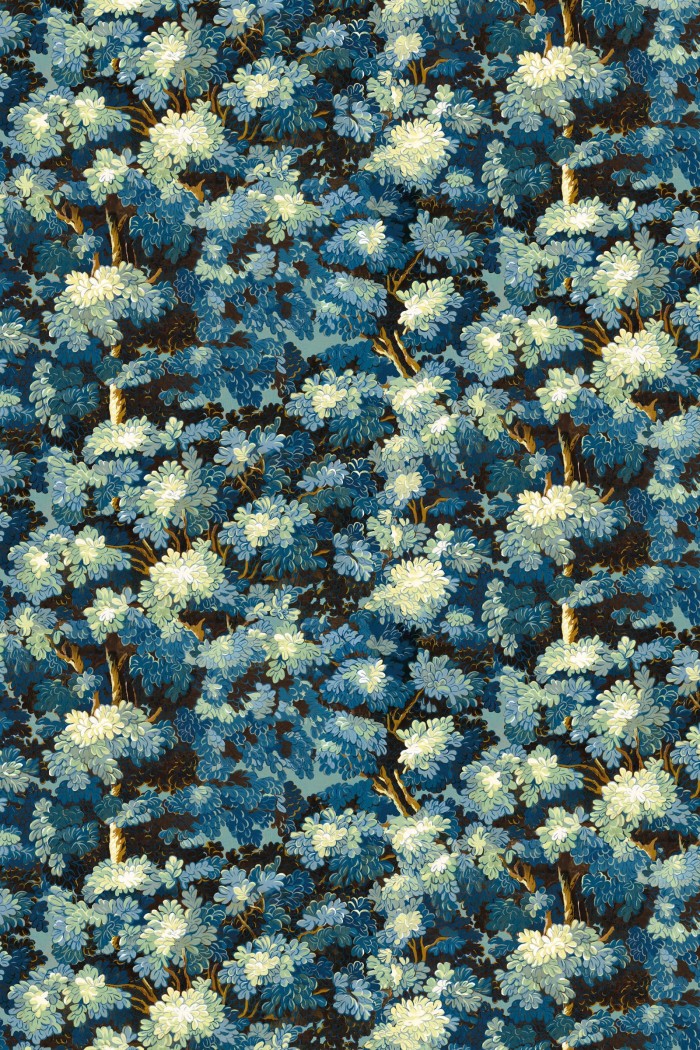
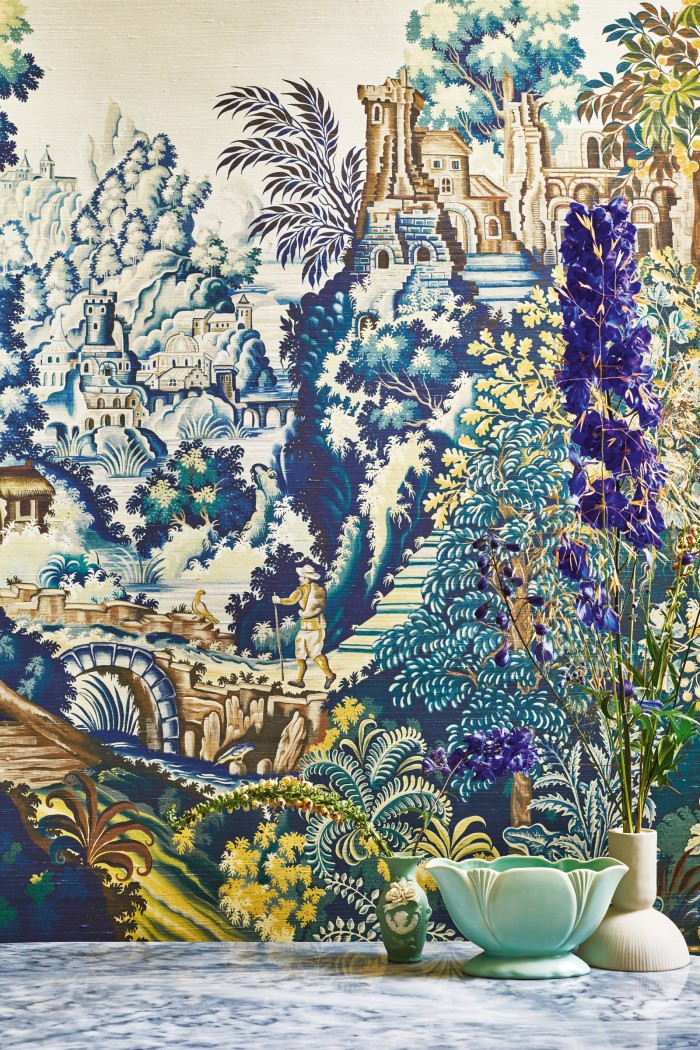
Verdure’s more recent popularity is part of a wider trend for more escapist interiors. “People are coming back to landscapes and scenic wallpapers,” notes Jean-Baptiste Martin of Antoinette Poisson. The Paris studio is seeing a swell in requests, particularly from English customers, for whole rooms, rather than statement walls, to be covered in its papiers dominotés. Its recent pattern, “Joli Bois” (meaning “pretty wood”), evokes a hunting scene from the age of Marie Antoinette. Decked with otherworldly trees and oaks, it borrows from an antique Aubusson verdure tapestry that decorates the salon in the Brittany home he shares with co-founder Vincent Farrelly. “People need to dream,” says Martin. “And this makes you feel as though you’re in your own fantasy woodland.”
For White, who has created modern verdures for brands including Zoffany and the decorator Kit Kemp, it’s all part of an age-old language of painting trees. The idea that verdure tapestries were made in sets to form a completely immersive environment has particular potency now. “Tapestries have a real romanticism to them,” she concludes. “They create a window into the outdoors that’s filled with a spirit of adventure and travel. Who wouldn’t want to escape into such mythical lands, especially today?”
Comments